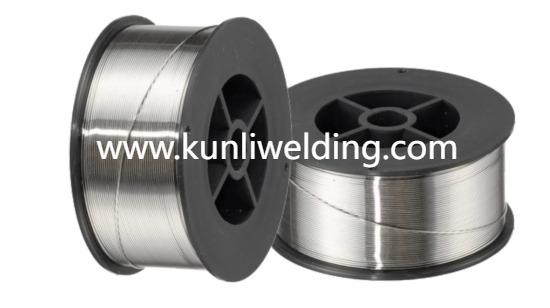Inquire
Kunliwelding Navigates Price Pressures for Aluminum Alloy Welding Wire Suppliers

When fabrication budgets tighten due to soaring metal costs, Aluminum Alloy Welding Wire Suppliers face a dual challenge: keeping price quotes competitive while ensuring timely delivery of high-quality consumables. Recent commodity trends have sent raw material expenses upward, squeezing margins for both producers and end users. In this environment, welding wire manufacturers must adopt strategic measures to absorb cost shocks and maintain reliable service.
One effective tactic is forward purchasing of aluminum ingots. By securing material before anticipated price hikes, suppliers lock in rates that protect downstream clients from sudden spikes. This approach requires robust market analysis and strong trading relationships. Kunliwelding, for example, leverages direct ties with smelters to negotiate volume contracts and continually monitors market indicators to time acquisitions wisely.
Vertical integration also offers resilience. Facilities that control alloy blending, drawing, and packaging under one roof reduce reliance on external vendors. Shorter procurement cycles and fewer handling steps translate into lower overhead, helping offset higher input costs. Clients benefit from transparent pricing models and single-invoice billing, simplifying budgeting for large projects in sectors like shipbuilding and automotive assembly.
Recycling initiatives further dampen price volatility. Collecting scrap welding wire and mill offcuts yields secondary aluminum feedstock at lower cost than primary metal. Modern smelting and refining processes can remove impurities, producing recycled alloys that meet strict mechanical and corrosion resistance requirements. By incorporating recycled content, suppliers reduce exposure to global commodity markets and contribute to circular economy goals.
Inventory management plays a critical role as well. Maintaining local buffer stocks near major distribution centers allows quick response to urgent orders without resorting to premium freight rates during material shortages. Ample warehouse reserves also enable suppliers to honor long-term contracts at agreed rates, even when the spot market surges, fostering trust with fabricators who depend on consistent supply.
Flexible order quantities and dynamic pricing help small and medium clients adapt to changing budgets. Instead of rigid minimums, web-based platforms let customers adjust spool sizes and delivery schedules, smoothing out their own cash flow concerns. Transparent price adjustment clauses tied to published metal indices give both parties clarity on cost changes and avoid unexpected charges at invoice time.
Supplier collaboration extends to joint risk sharing. Some contracts include cost-plus arrangements with agreed-upon ceilings and floors, allowing manufacturers and buyers to share benefits when markets move favorably and to split the burden when prices climb. This cooperative structure aligns incentives and builds long-term partnerships that weather economic cycles more effectively than fixed price agreements.
On the production side, efficiency measures reduce waste and energy consumption. Lean manufacturing techniques, automated quality checks, and continuous improvement initiatives trim scrap rates and lower per-unit costs. When downtimes and defects are minimized, overall production yields rise, partially offsetting higher alloy expenditures. These productivity gains ripple through to customers via stable wire pricing and dependable delivery timelines.
Digital tools enable real-time visibility into cost drivers. Online dashboards display material usage, inventory levels, and shipment statuses, empowering procurement teams to plan orders proactively. Predictive analytics can forecast when to adjust order volumes based on upcoming project milestones and market outlooks, ensuring that fabrication workflows continue uninterrupted.
Amid rising aluminum prices, welding wire suppliers that combine forward-looking procurement, vertical integration, recycling, flexible ordering, and production efficiency stand out for their ability to keep costs under control. By partnering with such suppliers, fabricators can focus on meeting project deadlines and technical specifications rather than wrestling with unpredictable material expenses. In this way, both parties navigate market volatility together, preserving quality and profitability across the supply chain.For more information on stable, high-performance aluminum welding wire offerings and support services, visit www.kunliwelding.com .
- Managerial Effectiveness!
- Future and Predictions
- Motivatinal / Inspiring
- Other
- Entrepreneurship
- Mentoring & Guidance
- Marketing
- Networking
- HR & Recruiting
- Literature
- Shopping
- Career Management & Advancement


 SkillClick
SkillClick